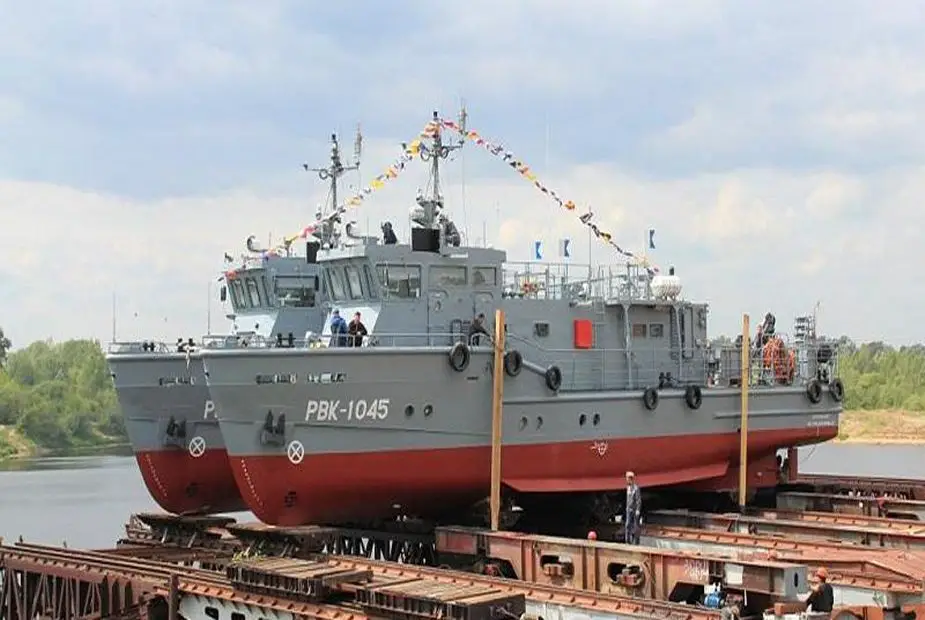Breaking news
Russian Naval Rescue services engage new Project 23040 boats.
The rescue detachment of Novorossiisk naval base is actively engaging harbour diving boats of project 23040. They are designed for operations close to naval bases, but are successfully used in the whole zone of responsibility from the Sea of Azov to Adler, the Zvezda weekly said.
 Two Russian Project 23040 rescue boats (Picture Source: SPB Marine)
Two Russian Project 23040 rescue boats (Picture Source: SPB Marine)
The boats have advanced equipment and a broad engagement range. They provide decompression, air, oxygen and helium regimes of medical recompression. They are effective in rescue, technical and ship surfacing operations, in the research of seabed, submerged objects and erections. The boats can extinguish a fire on 30-meter high vessels, pump water out of a ship in distress, provide electricity to a wrecked ship or coastal object.
The boat is 28.09 meters long and 5.56 meters wide. The midship board is 3 meters high, the bow is 3.4 meters high. The average draft is 1.5 meters. Full displacement is close to 118 tons. The main engine has a 2x441 KW capacity. The diesel generator has 2x80 KW. The emergency diesel generator has 1x20 KW. The speed is close to 13.7 knots. The crew comprises 3 men and the diving team has 5 men. The range is 200 miles at 10 knots.
The boats carry VideoRay small remotely guided unmanned underwater craft to search for underwater objects, as well as a towed sonar to search for various objects at a depth of 150 meters and find people overboard with a night vision system.
The boats are equipped with new SVU-5 universal diving gear which can be quickly put on due to easily dismountable connections. The ring of the diving helmet is unified with the equipment of other producers. Communication means to make underwater speech properly audible.
The boats are for the first time controlled by joysticks which easily keep them in the assigned point in any conditions. The two-shaft diesel power plant with fixed-pitch propellers and a bow propulsion unit also help. Solid steel hull with ice reinforcements allows operating in winter and in river deltas.
The Navy expects a modification of project 23040 which is a big hydrographic boat of project 23040G for a precision survey of the seabed relief by a single-beam echo sounder at depths of up to 2 thousand meters and for research of navigational dangers at a depth of 400 meters. The boat will have a hydrographic complex comprising multi-beam and single-beam echo sounders, a side-view sonar, a system for precise determination of coordinates and a tide gauge. The seabed survey is conducted from a hydrographic post on the bridge.
The boat can service all floating warning signs and deliver personnel, food and overhaul teams to coastal navigational facilities. It has a modern integrated bridge system with bow and stern controls to provide information for the whole crew. The stern control monitors crew operations to withdraw and set floating navigational equipment. It simultaneously maneuvers and controls the surface situation with radars and the data is reflected on the monitor in the electronic navigation map, the Zvezda said.
© Copyright 2019 TASS. All rights reserved. This material may not be published, broadcast, rewritten or redistributed.


























